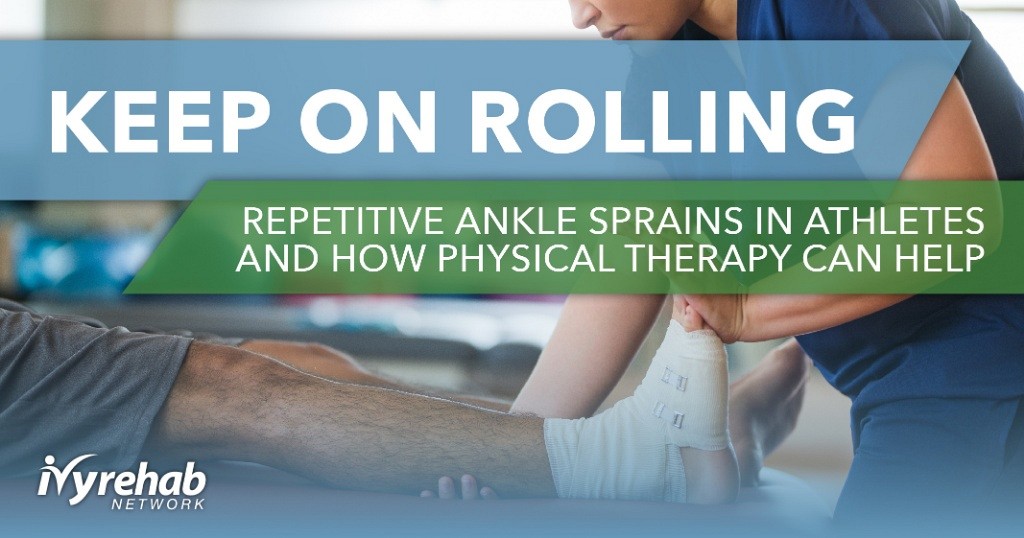Ankle sprains can be painful and debilitating, taking you out of the game or off the job for a few days or a few weeks. If you sprained your ankle as a child, an athlete, or even doing an everyday activity, you’re more prone to roll the same ankle again and again. Repetitive ankle sprains aren’t just bad luck—they’re often the result of weakened ligaments, poor balance, and incomplete rehabilitation.
Without proper treatment, repeated sprains can lead to chronic ankle instability, long-term pain, and even arthritis. This is especially common in sports like basketball, football, and soccer, where quick direction changes and jumping are frequent.
Why Do Repetitive Ankle Sprains Happen?
An ankle sprain occurs when the ligaments that stabilize your ankle joint become overstretched or torn. That first sprain weakens the ligaments, leaving them looser and less able to provide support. Unfortunately, ligaments don’t “bounce back” like muscles do. Once stretched, they tend to stay that way.
This makes you more prone to roll the same ankle again—whether you’re jumping for a rebound or simply stepping off a curb. Many athletes return to play before their ankle has fully healed, further increasing their risk.
Common signs of chronic ankle instability include:
- Repeated turning or rolling of the ankle, especially on uneven surfaces or playing sports
- Pain or tenderness
- Chronic discomfort and swelling
- The ankle feeling wobbly or unstable
How Ankle Sprains Disrupt Balance & Body Awareness
Your ligaments do more than just hold joints together—they also send proprioceptive signals to your brain, letting it know where your foot is in space. This sensory feedback is critical for balance, especially in fast-moving sports.
When ligaments are damaged, those signals weaken. Your brain may not detect that your ankle is beginning to roll until it’s too late—leading to yet another sprain.
How Does Physical Therapy Treat Chronic Ankle Instability?
This is where physical therapy (PT) makes a significant difference. At Ivy Rehab, we go beyond basic recovery to rebuild stability, retrain the brain, and reduce your risk of chronic ankle instability.
At Ivy Rehab, your individualized PT plan may include:
- Soft tissue mobilization to reduce pain and swelling
- Balance and proprioception training to retrain your neuromuscular system
- Strengthening exercises targeting your ankle, foot, hip, and core
- Stretching routines for the Achilles and calf to improve mobility
- Advanced tools like BioSway, dry needling, and aquatic therapy when appropriate
Most importantly, physical therapy helps you relearn how to use your entire foot during movement—from heel strike to push-off—ensuring your muscles and nervous system work together effectively.
A Few Other Things You Can Do To Reduce The Risk of Re-Spraining Your Ankle:
- Choose footwear based on activity and wear supportive shoes when playing sports or hiking
- Be aware of the surface; gravel, sand, and trails create increased stress to the ankle ligaments
- Strengthen your leg, foot, hip, and core muscles
- Work on improving your balance reactions
- Maintain full ankle dorsiflexion (when you pull your toes towards your face)
- Open up the Achilles and calf with exercises
- Use your whole foot and roll off the big toe side of your foot when walking
These strategies complement physical therapy and help reinforce better biomechanics, reducing your risk of future sprains and ankle instability.
Don’t Wait for the Next Sprain
The cycle of repeated ankle sprains can lead to chronic pain, instability, and missed time on the field—or in daily life. If you’ve rolled your ankle more than once, it’s time to take a smarter, more proactive approach.
Ivy Rehab Physical Therapists Can Help Relieve Your Chronic Ankle Pain
Don’t wait until you roll your ankle again to seek help. Whether you’re recovering from a recent sprain or dealing with years of instability, Ivy Rehab’s expert physical therapists can help you regain strength, control, and confidence.
Reclaim Your Strength and Mobility
Experience tailored physical therapy programs designed to alleviate pain and restore function
Article Reviewed by Holly Lookabaugh-Deur, PT, DSc, GCS, CEEAA
Holly Lookabaugh-Deur, PT, DSc, GCS, CEEAA is a practicing physical therapist and a partner and Director of Clinical Services at Ivy Rehab Network. Deur is board certified as a geriatric clinical specialist and certified exercise expert for aging adults with more than 35 years of clinical experience. She is certified as an aquatic and oncology rehabilitation specialist and serves as adjunct faculty at Central Michigan University and Grand Valley State University.





